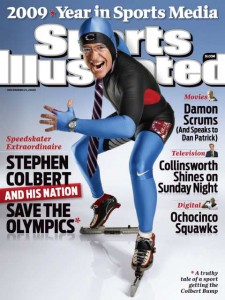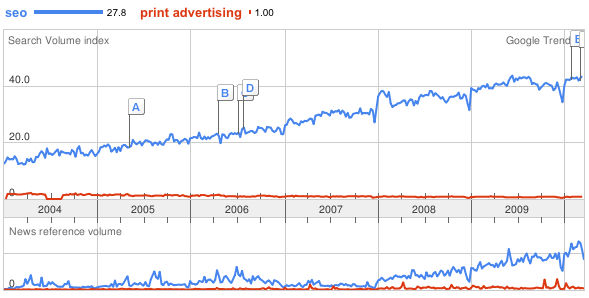 Like anyone whose job involves direct client contact, web professionals often come across difficult client behaviour patterns. But as the saying goes — the customer is always right — and often these problems go unchecked in favour of politeness. These things not only affect your web professional’s sanity, but may also be detrimental to your working relationship, your project’s productivity, and even your wallet’s contents.
Like anyone whose job involves direct client contact, web professionals often come across difficult client behaviour patterns. But as the saying goes — the customer is always right — and often these problems go unchecked in favour of politeness. These things not only affect your web professional’s sanity, but may also be detrimental to your working relationship, your project’s productivity, and even your wallet’s contents.
The following is a collection of things you should avoid saying to your web professionals, including designers, developers, and copywriters, if you want to get the most out of their services, while making the world a happier place.
Continue reading →
Posted on Apr 5 2010 12:59 pm by Web Copywriters
tags: Business and the Web Working in the Web
|
category: Business & marketing |
6 Comments
 One of the most important steps to take before speaking to your customers through your web copy is learning what they want, and what opinions they have about you and your competition.
One of the most important steps to take before speaking to your customers through your web copy is learning what they want, and what opinions they have about you and your competition.
But what if you don’t have the budget to pay for expensive research data or conduct focus groups? Targeted market surveys can cost up to $10,000 to reach a sample of just 1,000 people.
The advent of social media over the past decade has resulted in more and more people voluntarily sharing the valuable information market researchers pay for on sites like Facebook and Twitter. eMarketer predicts that the number of Twitter users alone will skyrocket this year to over 18 million, and March 4, 2010 marked the 10 billionth Twitter status update. That’s 10 billion times people have posted information online for all to see about what they are doing, thinking, and buying.
Continue reading →

Canadian Business’ Paul Brent recently suggested in Dewing It Alone that the power of social networks could render traditional marketing departments obsolete. It certainly seems to be putting the nail in the coffin.
Marketing spend is rapidly shifting online as businesses are realizing they can get more bang and reach through the Internet. To be sure, the Internet has already killed the old music institution and transformed TV. Case in point: the appeal and effectiveness of traditional 30-second commercials are fading fast, and new players and methods are taking over.
Continue reading →
Thanks to the Internet, businesses no longer need to outspend their competitors to outperform them on the marketing front. Small companies can go toe-to-toe with established, deep-pocketed  enterprises, virtually overnight.
enterprises, virtually overnight.
But how? By leveraging the value a well-versed website designer brings to the table. Regardless of a business’ size or industry, a proficient website designer can help:
- Achieve a desired image and appeal to specific markets
- Enable prospects and customers to quickly find relevant information and easily complete tasks
- Build a customer base and increase leads, sales and revenues
Oddly, businesses frequently fork over significant marketing budgets to PR firms, radio, TV, and print publications. According to PricewaterhouseCoopers, businesses spend about $400 billion on advertising annually, much of the money going to traditional channels, like television commercials. However, when it comes to their website — the marketing hub that pulls all marketing operations together — business owners often tighten the purse strings.
Continue reading →
Someone in the printing business recently suggested to me websites are “overrated.” I was blown away. A website is not just a piece of the marketing pie; it’s the actual hub that connects all the marketing strategies and tactics, online and offline.
Regardless what business or industry you’re in, websites have evolved into the base of operations, where prospects and clients inevitably go to gain product, service, and company information.
Of course, other marketing elements play a role: postcards, e-mails, PR, commercials and much more. But these sources frequently push people to a website. Even TV commercials are trading in 1-800 numbers for website addresses.
Continue reading →
 Harrison Hot Springs has invited Colbert Nation’s Stephen Colbert to embark on an official search for the Sasquatch during his upcoming trip to British Columbia for the Vancouver 2010 Olympic Winter Games.
Harrison Hot Springs has invited Colbert Nation’s Stephen Colbert to embark on an official search for the Sasquatch during his upcoming trip to British Columbia for the Vancouver 2010 Olympic Winter Games.
Harrison Hot Springs, a 90-minute drive from the Vancouver International Airport and the Richmond Olympic Oval, has been the focal point of the mysterious ape-like creature, also called Bigfoot, for more than a century.
If Colbert accepts the invitation, he will be provided transportation, accommodations and special training (which could include spa treatment) to help him prepare both physically and mentally.
Continue reading →
Posted on Jan 7 2010 4:49 pm by Web Copywriters
|
category: Business & marketing |
4 Comments
Finnish design strategist Sami Viitamäki put forth an amusing list entitled Eight Ways to Kill an Idea.
Here they are:
- 1. New marketing manager
- 2. Idea sent by email
- 3. Legal department recommendation
- 4. Creative review
- 5. New creative director
- 6. Global brand guidelines
- 7. Client thinks he’s creative
- 8. Budget
A few others that might fit:
- It’s been done
- It’s never been done
- The boss gets wind of it
Check out the illustrated list.
Posted on Nov 23 2009 12:04 am by Web Copywriters
tags: Copywriters
|
category: Business & marketing |
1 Comment
Forrester Research recommends that customer experience professionals use personas founded in ethnographic research to guide the design of products, channels, and messages.
However, organizations often struggle to use personas effectively. To overcome common barriers to persona use, Forrester’s Jonathan Browne suggests customer experience professionals should brainstorm with key stakeholders to create roughly sketched profiles of target customers, called “assumption personas.”
This exercise helps build the case for creating real personas, gets stakeholders to think about their business goals in customer-centric terms, and generates hypotheses about target customers for testing in subsequent ethnographic research.
“Customer experience professionals must ensure that assumption personas are viewed as a step toward customer insight rather than an end in themselves,” noted Browne. “They are valuable tools for kicking off persona projects, but they aren’t fit for guiding design decisions.”
Posted on Nov 9 2009 1:25 pm by Web Copywriters
|
category: Business & marketing |
1 Comment

Businesses looking for writers often ask what’s the difference between a copywriter and a web copywriter.
In a nutshell, a copywriter is a generalist, and typically writes for print, radio or TV. A web copywriter specializes in writing website content (also known as web copy and web text).
Can web copywriters write for print and other ‘offline’ communication vehicles? Sure. The web copywriters at Webcopyplus have vast experience in everything from corporate and employee communications to media relations and journalism. Our web copywriters might specialize in writing for the Web, but we have the ability produce articles, brochure copy, annual report material, speeches, video scripts, and much more.
Continue reading →
Posted on Oct 26 2009 11:18 pm by Web Copywriters
tags: Copywriters
|
category: Business & marketing |
1 Comment
 Like anyone whose job involves direct client contact, web professionals often come across difficult client behaviour patterns. But as the saying goes — the customer is always right — and often these problems go unchecked in favour of politeness. These things not only affect your web professional’s sanity, but may also be detrimental to your working relationship, your project’s productivity, and even your wallet’s contents.
Like anyone whose job involves direct client contact, web professionals often come across difficult client behaviour patterns. But as the saying goes — the customer is always right — and often these problems go unchecked in favour of politeness. These things not only affect your web professional’s sanity, but may also be detrimental to your working relationship, your project’s productivity, and even your wallet’s contents. One of the most important steps to take before speaking to your customers through your web copy is learning what they want, and what opinions they have about you and your competition.
One of the most important steps to take before speaking to your customers through your web copy is learning what they want, and what opinions they have about you and your competition.

 enterprises, virtually overnight.
enterprises, virtually overnight.





